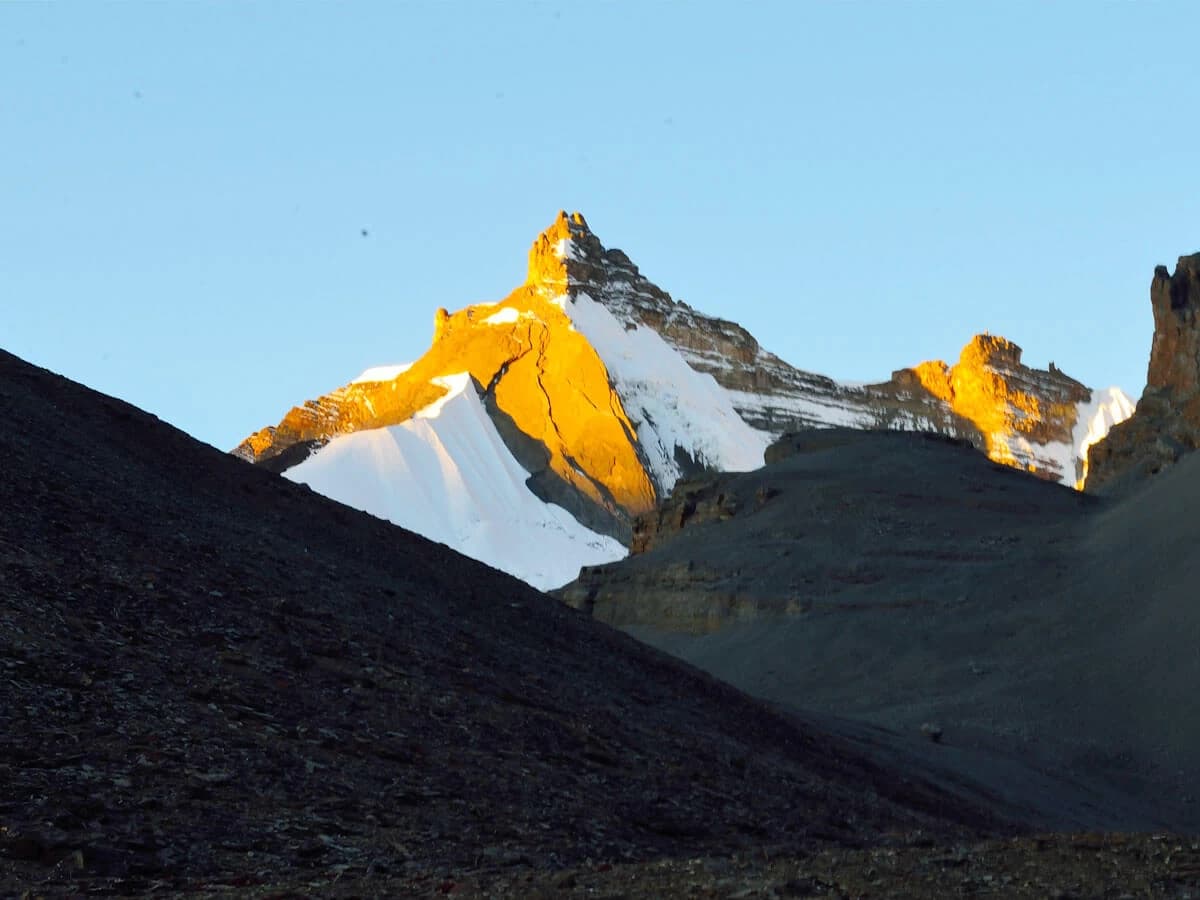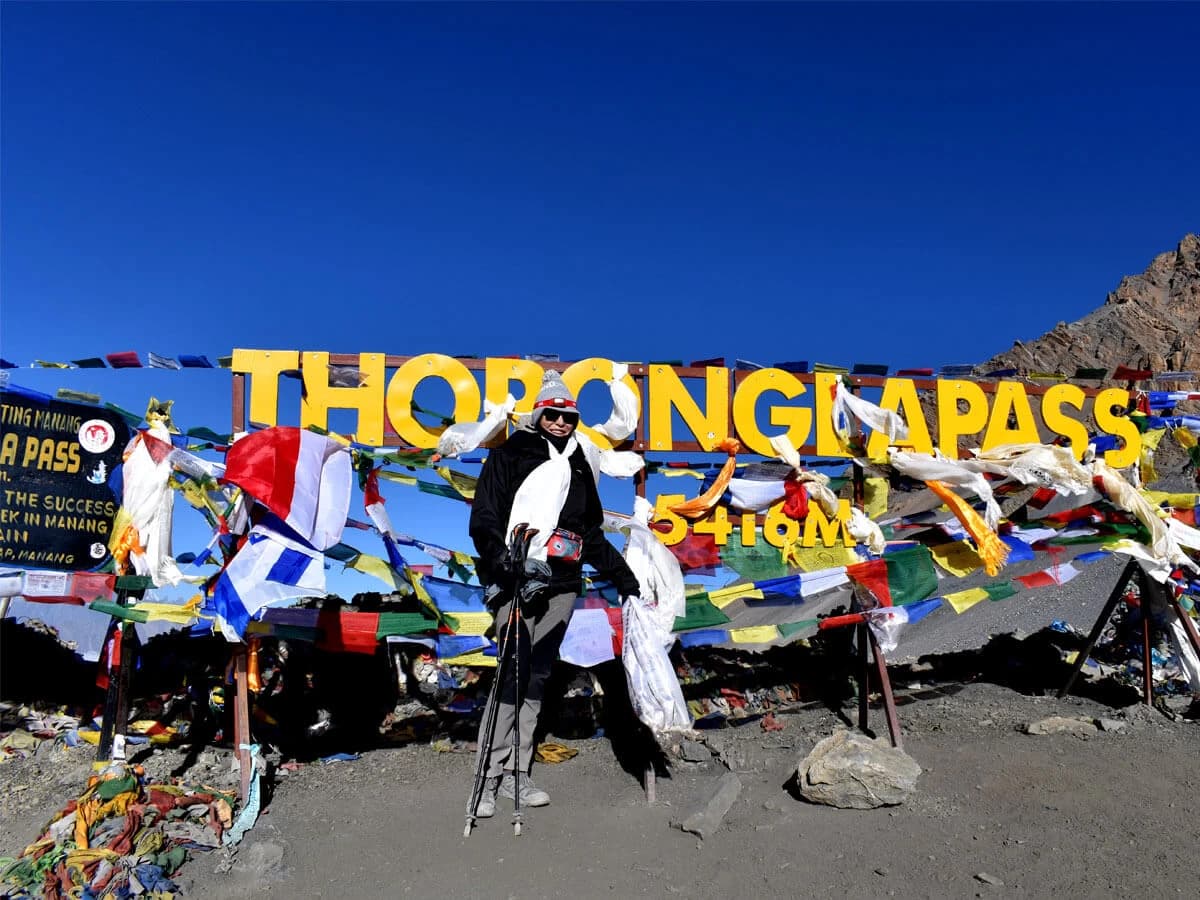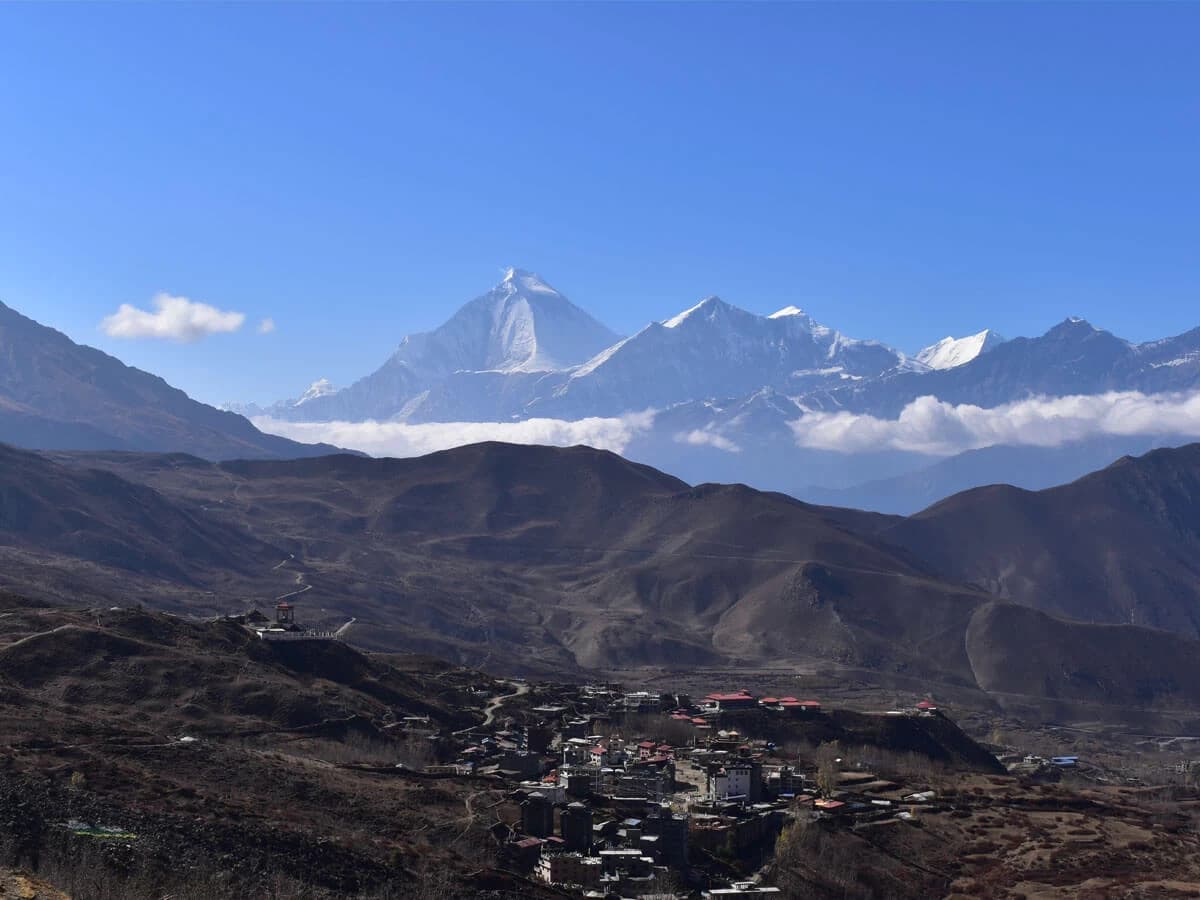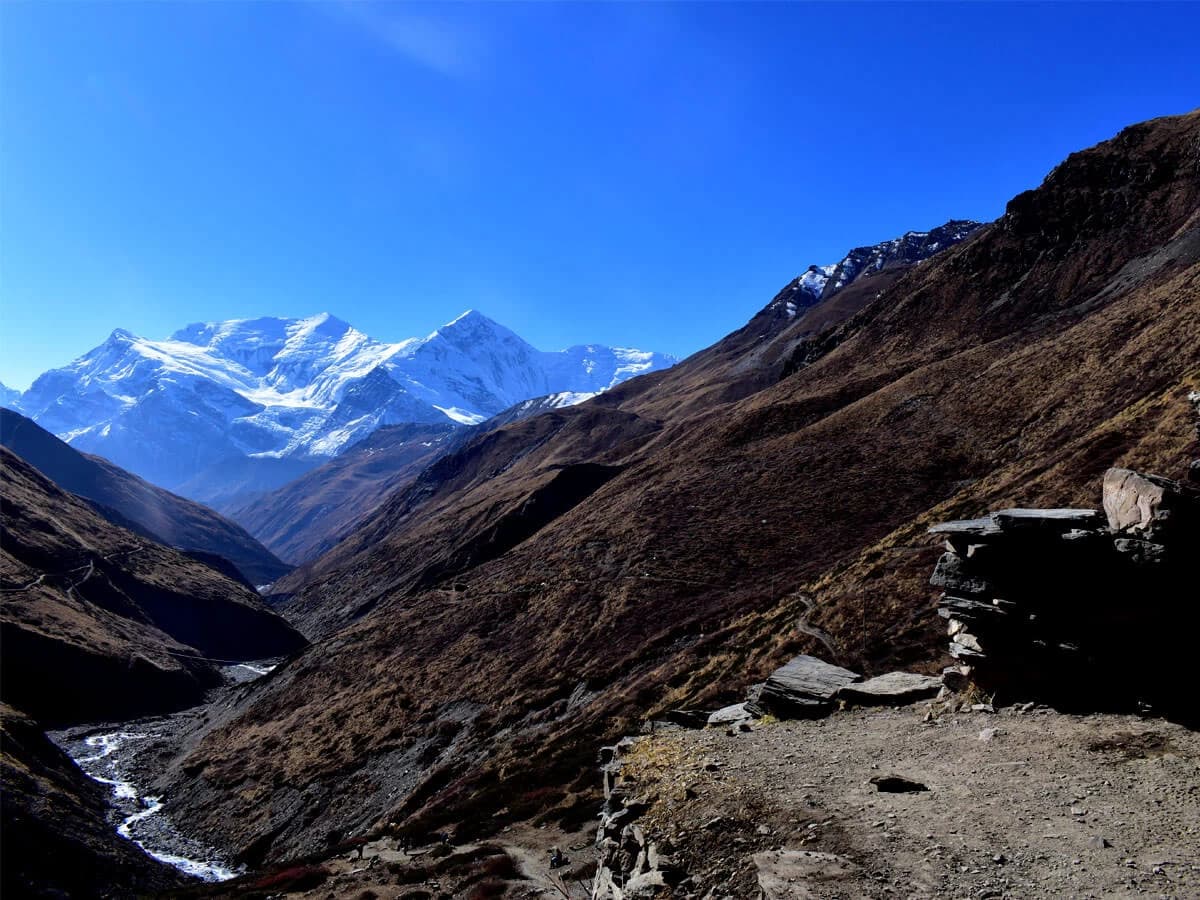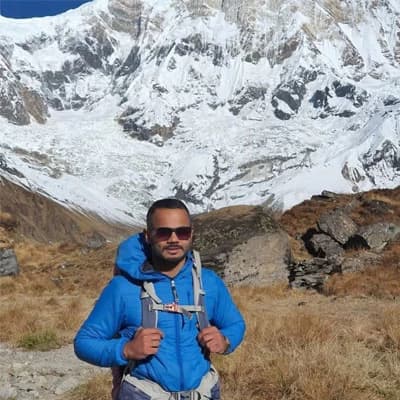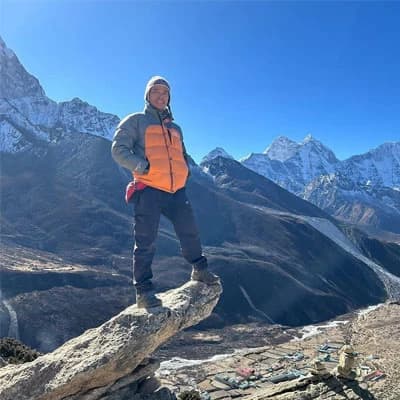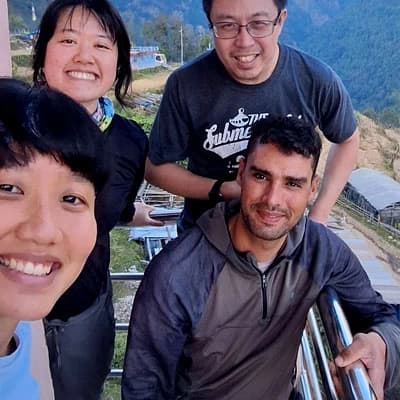The 10-Day Annapurna Circuit Trek takes you through Nepal’s Annapurna region. It offers stunning mountain views, vibrant villages, and cultural experiences. Highlights include the sacred Muktinath Temple, the natural hot springs at Tatopani, and the challenging Thorong La Pass. This trek blends natural beauty with rich culture, leaving you with unforgettable memories.
Annapurna Circuit Trek – 10 Days
Highlights: Annapurna Circuit Trek 10 Days
- Witness the majesty of the Annapurna range, including Annapurna I, Machapuchare (Fishtail), Dhaulagiri, Nilgiri, and Hiunchuli.
- Relax in the soothing natural hot springs at Tatopani after your trek.
- Discover the rich cultural tapestry of Gurungs, Thakalis, and Tibetan communities, experiencing their unique traditions and warm hospitality.
- Conquer the thrilling Thorong La Pass at 5,416 meters, the trek's highest point, and enjoy breathtaking glacier views.
- Visit sacred sites like Muktinath Temple, a spiritual hub for Buddhists and Hindus.
Shortest Route for Annapurna Circuit Trekking
Your adventure begins with a scenic drive from Kathmandu to Besisahar, where the Annapurna region's rolling hills and distant panoramic vistas will greet you. Continuing to Chamje, a peaceful village nestled amidst nature's beauty, you’ll find the ideal starting point for your trek.
On Day 2, the drive to Chame takes you along rugged roads with breathtaking views of the Marsyangdi River and charming villages. Imagine trekking through pine forests, encountering traditional stone houses, and marveling at cascading waterfalls, all set against stunning hills and peaks.
Your actual trek starts on Day 3 as you journey from Chame to Lower Pisang. The trail meanders through forests, crosses suspension bridges, and traverses rocky terrain, with highlights like Dhikur Pokhari. You’ll be treated to spectacular panoramas of snow-capped peaks and tranquil rivers along the way.
Heading to Manang on Day 4, you'll be captivated by sweeping views of Manang Valley, Tilicho Peak, and the towering Annapurna ranges. The rich cultural tapestry of the villages along the trail adds a special charm and makes this part of the trek both visually and culturally rewarding.
After a well-deserved rest day in Manang for acclimatization, you’ll continue to Yak Kharka. Here, you’ll find alpine grasslands and grazing yaks. The serene mountain vistas create a peaceful atmosphere, contrasting beautifully with the more rugged sections of the trek.
As you move on to Thorong Phedi, prepare for jaw-dropping views of Annapurna’s dramatic peaks and high-altitude landscapes. The next day’s highlight, crossing Thorong La Pass, offers unforgettable landscapes before you descend to Muktinath, a sacred site for Hindus and Buddhists.
The final leg of your journey takes you through charming villages by jeep, with a relaxing stop at Tatopani’s natural hot springs. Concluding in the picturesque lakeside city of Pokhara, your adventure wraps up with a scenic drive back to Kathmandu, leaving you with cherished memories of the Annapurna Circuit.
Annapurna Circuit Trek – 10 Days Itinerary
Your journey begins with an 8-hour drive along the scenic Kathmandu-Pokhara Highway, bringing you closer to the Annapurna region. You’ll pass through Dumre before arriving at Besisahar, the headquarters of Lamjung district, where lush green landscapes and distant mountain views make the drive a delightful experience.
From Besisahar, the journey continues to Chamje, where a serene village surrounded by natural beauty awaits. Here, you’ll settle in for the night, ready to embark on an unforgettable adventure the next day.
After breakfast, you’ll take a four-hour drive to Chame, following rugged roads along the Marsyangdi River. The route winds through Gurung and Magar villages, pine forests, and scenic spots like the Dharapani checkpoint, where your trekking permits will be registered.
As you reach Chame, its charming stone houses and stunning views of snowcapped peaks and forested hills will greet you. After settling into a cozy teahouse and enjoying a hearty meal, you’ll rest in this peaceful mountain village for the night.
The day starts with a mesmerizing sunrise over Lamjung Himal (6,893 m) before you trek through forests of pine and fir along a mostly flat trail. Passing through Bhratang and sections with large rock faces, you’ll marvel at snowcapped peaks and cascading rivers.
Crossing suspension bridges, the trail takes you to Dhikur Pokhari and onward to Lower Pisang (3,200 m). After 5—6 hours of trekking, you’ll arrive at your destination, resting and taking in the beauty of the surrounding landscapes.
Today’s trek begins with a climb to a ridge offering sweeping views of Manang Valley and Tilicho Peak (7,145 m). Descending into the Sabje Khola Valley, you’ll walk along a flat stretch, enjoying the vistas of Annapurna III and IV.
Crossing a wooden bridge over the Marsyangdi River, you’ll pass through Mungji village before a steady ascent to Manang. With its rich culture and stunning mountain scenery, this charming village will be your home for the night.
A rest day in Manang helps you acclimatize to higher altitudes. You’ll take a short hike to Khansar village, enjoying views of the Annapurna range, lush valleys, and picturesque villages. A visit to Gangapurna Lake, with its crystal-clear water reflecting snowcapped peaks, will be the day’s highlight.
In the evening, a hearty Nepali dinner awaits you in the peaceful atmosphere of Manang, preparing you for the adventures ahead.
Leaving Manang, you’ll gradually ascend toward Yak Kharka, crossing Gunsang village and open fields where horses and yaks graze. The trail transitions into alpine grasslands, offering spectacular views of peaks like Tilicho, Chulu West, and the Annapurna Range.
After several hours of trekking, you’ll arrive at Yak Kharka, a tranquil settlement at 4,050 meters. Here, you’ll relax in a cozy tea house surrounded by breathtaking mountain vistas.
The trek from Yak Kharka to Thorong Phedi begins with a gradual climb along a ridge, revealing awe-inspiring views of Annapurna II, III, and IV. The high altitude and landslide-prone areas require caution, but the rewarding scenery makes the effort worthwhile.
After crossing the Marsyangdi River via a wooden bridge and navigating a narrow trail, you’ll descend to Thorong Phedi at 4,525 meters. This dramatic landscape, towering peaks, and arid beauty will be your resting place for the night.
Today’s highlight is crossing Thorong La Pass, the highest point of your trek. Although the climb is challenging, the panoramic views of Thorong Peak, the Annapurna and Dhaulagiri ranges, and the Kali Gandaki Valley are unforgettable.
After reaching the pass, you’ll descend to Muktinath, a sacred site for Hindus and Buddhists. Exploring its temple and soaking in the peaceful atmosphere marks the perfect end to a long yet rewarding day.
After breakfast, you’ll begin a jeep ride through charming villages like Jomsom, Marpha, and Tatopani. The route descends into the Kali Gandaki Valley, the world’s deepest gorge, flanked by the majestic Dhaulagiri and Annapurna peaks.
You’ll pause at Tatopani for lunch and a rejuvenating dip in its natural hot springs before continuing to Pokhara. By evening, you’ll arrive at this peaceful lakeside city, where you’ll relax at a comfortable 3-star hotel.
After breakfast in Pokhara, you’ll take a scenic 6-7 hour drive back to Kathmandu. Upon your arrival in Kathmandu, you can unwind, shop for souvenirs, or explore the vibrant streets at your own pace.
In the evening, Himalayan Massif Trek will host a special farewell dinner for you. With delicious Nepali dishes and captivating cultural performances, it’s a perfect way to celebrate your journey and create lasting memories.
Annapurna Circuit Trek – 10 Days Route Map
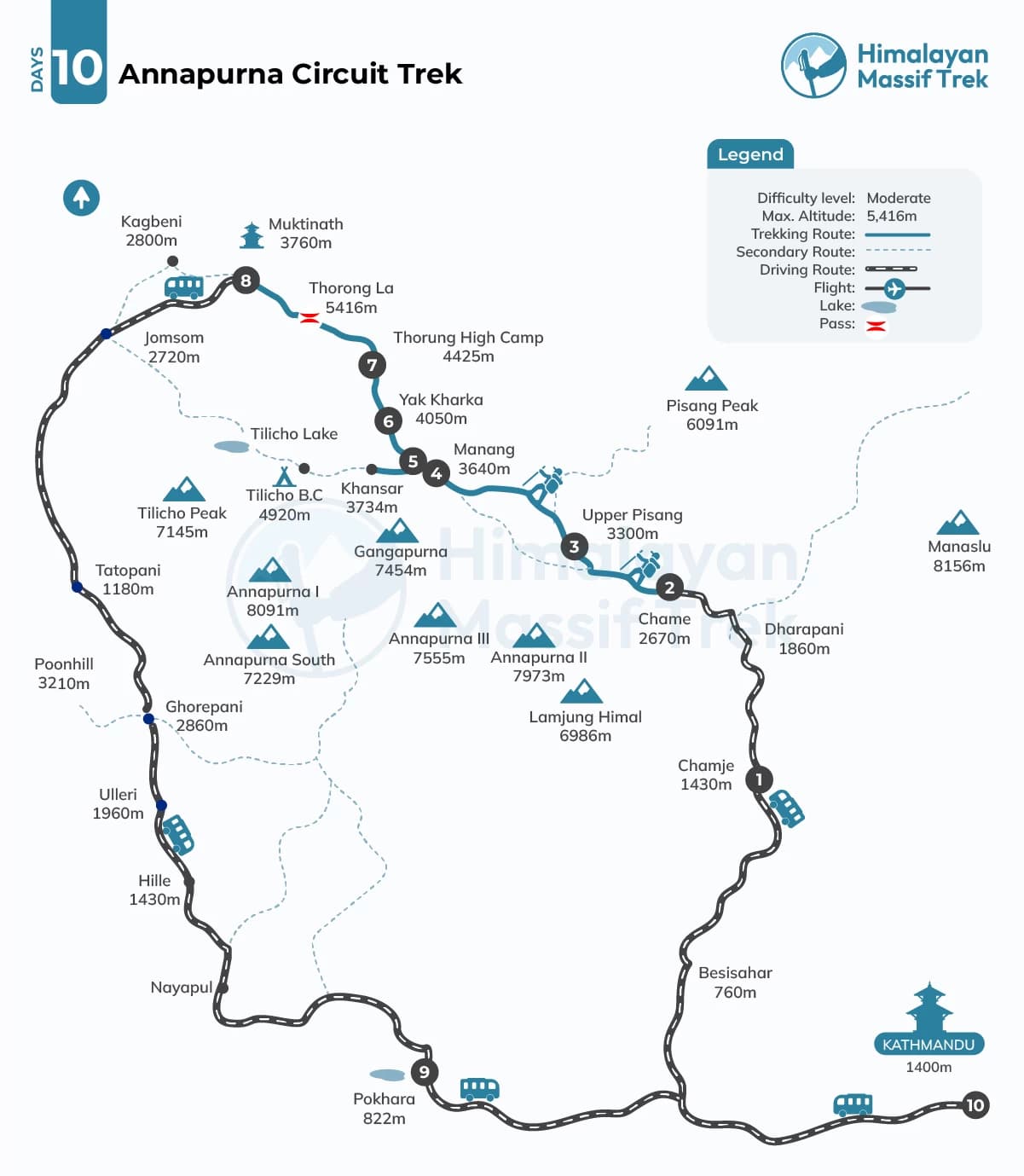

Cost Details
Meals:
- 3 standard meals a day during the trek
- Set of breakfast, Lunch and Dinner
Accommodation:
- 9 nights Lodge accommodation (Private room and common bathroom)
- 1 night 3 star hotel accommodation in Pokhara
Transportation:
- Shared transport from Kathmandu to Chamje
- Drive/flight from Jomsom to Pokhara
- Tourist bus transport from Pokhara to Kathmandu
Permit:
- All the necessary permits for this trek
Guide and porters:
- An experienced English-speaking guide
- Strong porters sharing between two members
Trekking Gears:
- Sleeping bag and down jacket to use for the trek
- HMT duffel bag
- First aid medical kit
Miscellaneous:
- Salary, food and accommodation for guide and porters
- Government taxes and liabilities
- Hot and cold beverage
- Meals in Kathmandu and Pokhara
- Phone calls, internet, hot shower and laundry bills
- Travel insurance and Nepal visa fee
- Trekking gears
- Tip and for guide and porters
To confirm your payment, a deposit payment is required, which is 30% of the total booking price. This deposit helps us secure permits, logistics, and other necessary arrangements for your trek.
We understand that plans can change, and we strive to be as flexible as possible. However, to cover operational costs, a cancellation fee applies. This is a percentage of your total booking price and is deducted from the deposit payment.
Cancellation Fees
Cancel 30% days before departure: 5% of the trip cost
Cancel between 10 to 30 days before departure: 10% of the trip cost
Cancel within 10 days of departure: 20% of the trip cost
If you need to cancel, please notify us as early as possible to reduce charges.
Rescheduling
Unexpected circumstances can disrupt travel plans, even if you still want to do the trip. To support our clients, we have generously waived all rescheduling fees. You can postpone and reschedule your trip at no additional cost, as long as the new departure date falls within one year of your original booking.
Upgrades
If you wish to upgrade your accommodation, transportation, or any other services not mentioned in the Trip Includes section, please be aware that these upgrades will incur additional costs. We can assist in arranging these options for you based on your preferences and availability.
Dates & Availability
Private TripIf you don't find an appropriate date, you can propose a Preferred Departure Date, and we’ll ensure the trip runs as scheduled just for you.
Trip Gallery
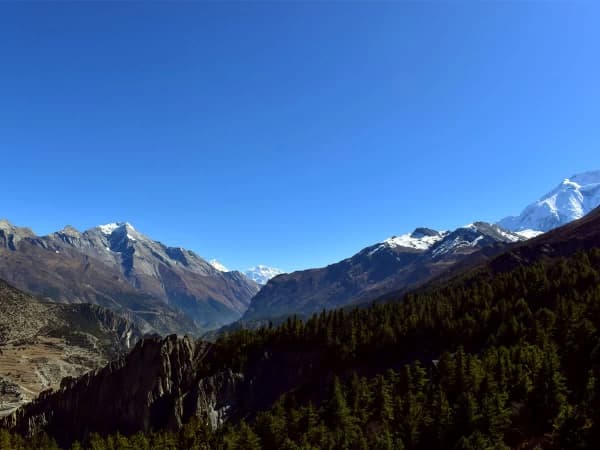
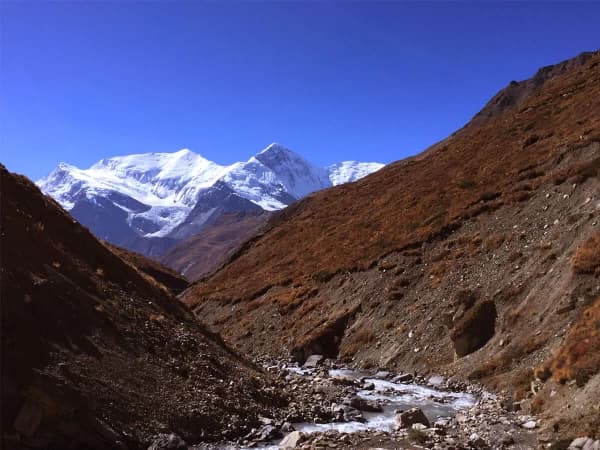
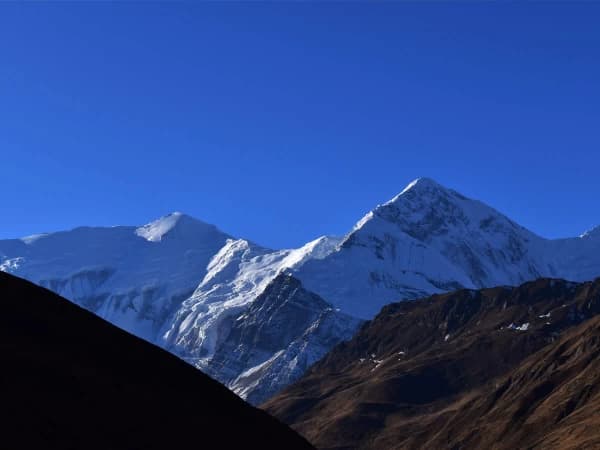
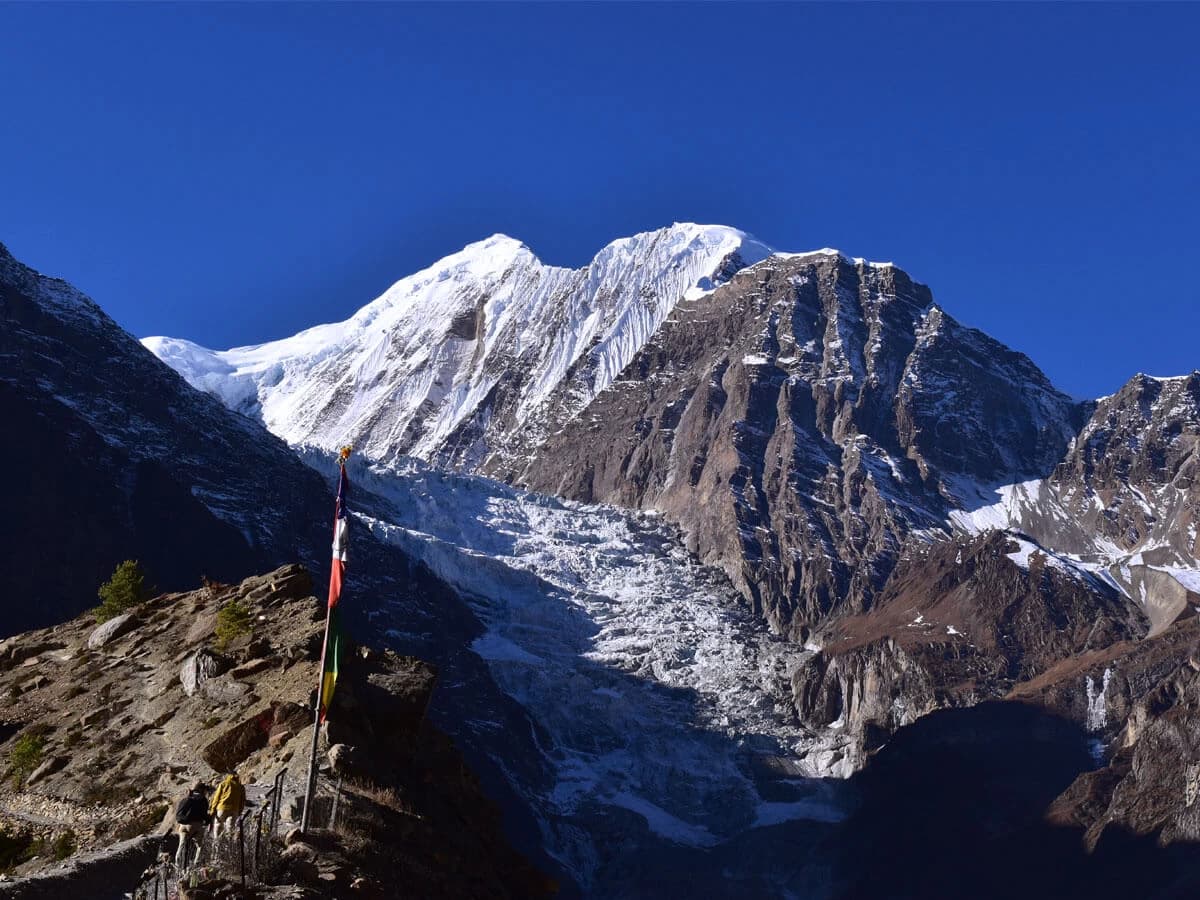
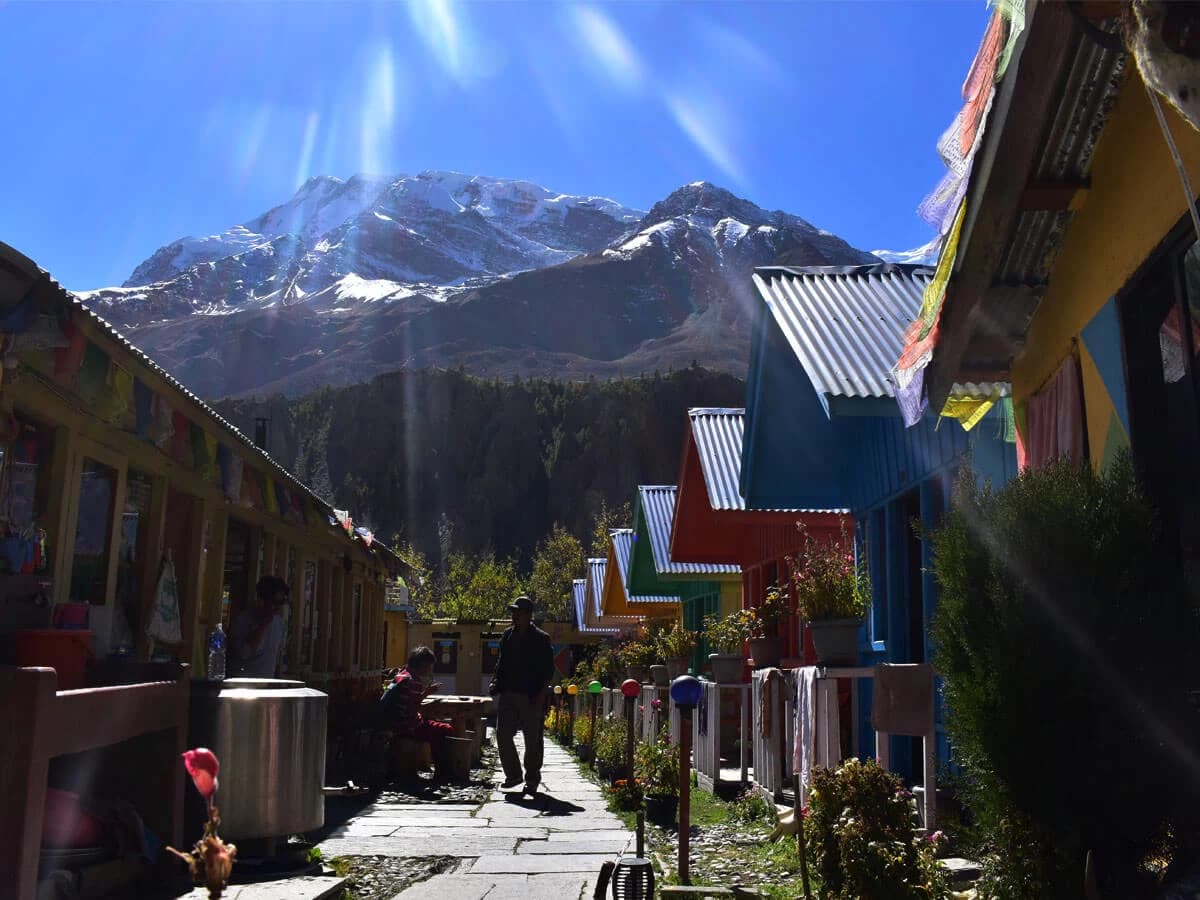
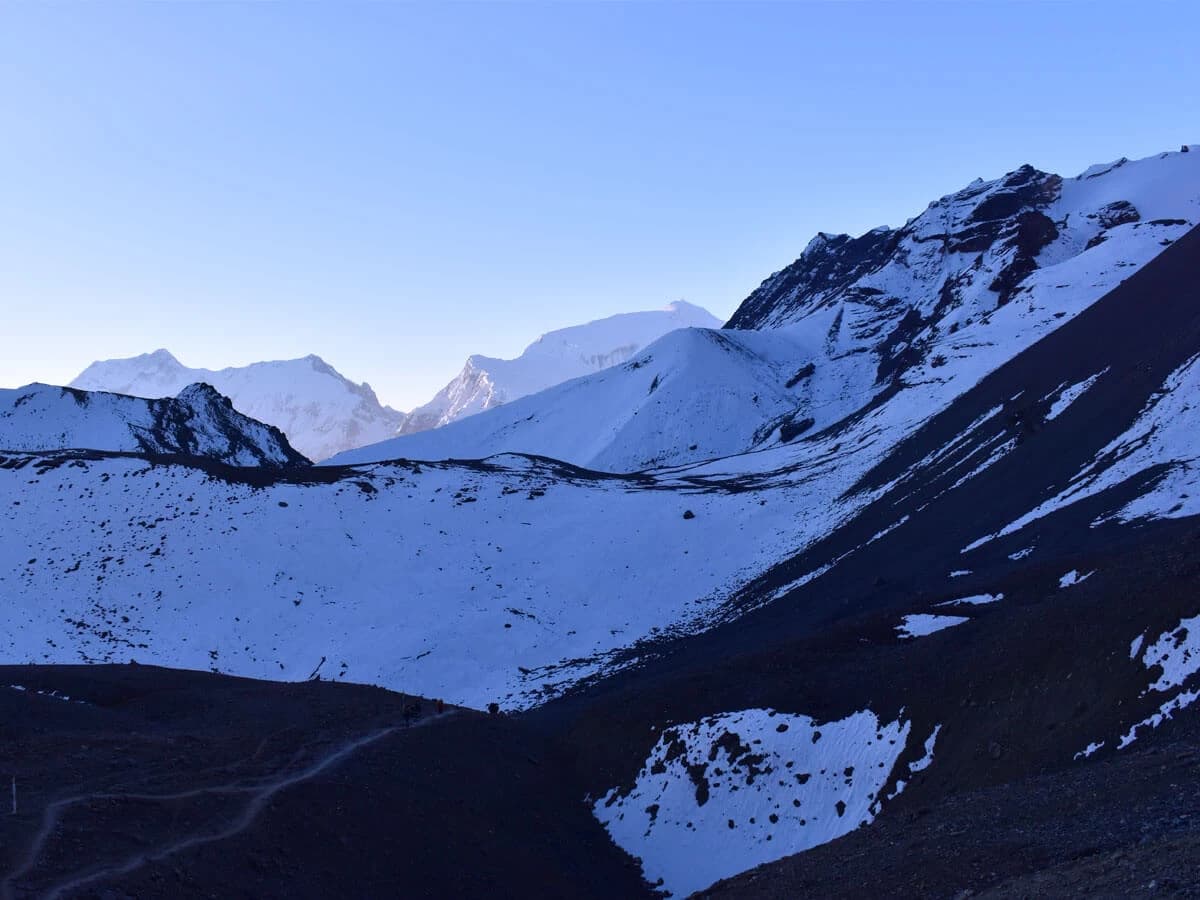
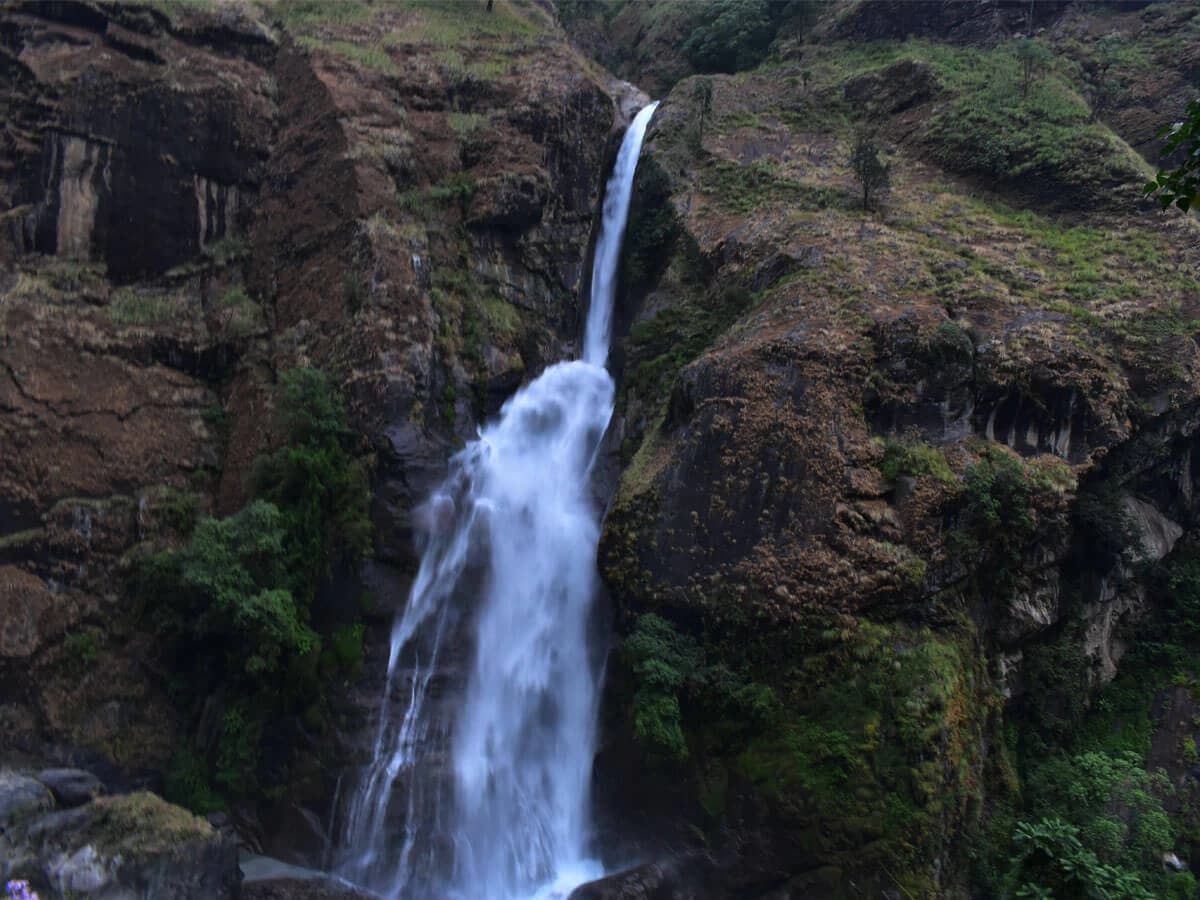
Essential Information
Accommodation During the Annapurna Circuit Trek
The Annapurna Circuit Trek offers a mix of accommodations, ranging from simple teahouses to more comfortable lodges. Over the 10 days of trekking, you’ll stay in lodges or guesthouses, mostly with twin-sharing rooms that provide basic facilities.
At lower elevations, like Chamje, Chame, Pisang, and Muktinath, lodges are more comfortable and may include attached bathrooms, hot showers, Wi-Fi, and charging facilities, though some services might have additional costs. These areas are known for their well-equipped accommodations, ensuring a pleasant stay.
As you ascend to higher altitudes, such as Manang, Yak Kharka, and Thorong Phedi, lodges become simpler but still meet essential needs with shared rooms, meals, and warm blankets. In more remote areas near the high pass, dormitory-style rooms may also be available, and resources like internet and hot showers become limited.
Electricity for charging devices is generally available, but it’s wise to conserve energy as facilities grow scarce at higher elevations. Accommodation in Kathmandu before and after the Annapurna Loop Trek 10 Days is not included, so plan for at least two nights in the city - one before and one after your trek.
The accommodations along the 10-Day Annapurna Circular Trek provide a good balance of comfort and local hospitality, ensuring a safe and cozy experience for all trekkers.
Food on the 10-Day Annapurna Circular Trek
The 10-Day Annapurna Circular Trek offers a variety of meals to keep you energized, ranging from local Nepali dishes to familiar Western options.
Teahouses along the trail serve hearty Nepali meals like Dal Bhat Tarkari (rice, lentils, and vegetables), packed with protein and energy. Don’t miss trying Thakali cuisine, known for its rich flavors, or warming dishes like Thukpa (noodle soup) and Momo (dumplings).
At lower elevations, many teahouses also offer Western meals such as pasta, pizza, and Tibetan bread. As you trek higher, food options become simpler, so enjoy the variety while it’s available.
Staying hydrated is vital, with options like garlic soup, ginger tea, and green tea highly recommended for their health benefits and help with acclimatization. Avoid alcohol, caffeine, dairy, and hot chocolate at high altitudes, as these can impact your health.
For hygiene, it’s best to stick to vegetarian meals, as meat may not be handled safely in remote areas. With diverse meal choices, a focus on hydration, and mindful planning, you’ll stay nourished and strong throughout your trek.
Water on the Short Annapurna Circuit Trek 10 days
Staying hydrated is crucial while trekking, especially since you lose more water through sweat at higher altitudes. It's essential to drink enough water to stay healthy and help your body adjust to the altitude, preventing altitude sickness. We recommend drinking at least 4 liters of water each day.
You can find water in various ways along the trek:
Drinking Water Stations: The Annapurna Conservation Area Project (ACAP) has set up water stations in larger villages. The water here is filtered using ozone treatment and is available for a small fee.
Teahouses: Boiled water is available at teahouses along the route for a small charge.
Purification Systems: Bring your own purification tablets, a sterilizing pen, or a bottle with a built-in filter. You can use these on tap water, but be aware there’s no running water at higher elevations.
Bottled Water: Bottled water is available in the lower villages, though it’s not the most environmentally friendly option.
Local Taps: In some villages, you can fill your bottle with public taps, which are connected to mountain streams. The water here is generally considered pure, but always be cautious.
While you can buy bottled water, we recommend carrying a refillable bottle and purchasing boiled or filtered water from teahouses. If needed, Himalayan Massif Trek can provide purification pills upon request. Hence, for safety, avoid drinking directly from local taps, wells, or rivers.
Best Time for Short Annapurna Circuit Trekking
The Short Annapurna Circuit Trek offers an unforgettable adventure, and the timing of your trip can significantly impact your experience.
The Annapurna Circuit 10-day Trek is open year-round, but the best times to visit are during autumn (September to November) and spring (March to May). During these seasons, the weather is perfect for trekking, with clear skies, moderate temperatures, and minimal rainfall. You’ll enjoy stunning views of the snow-capped Himalayas, blooming wildflowers, and active wildlife. It’s also a great time to spot rare animals and watch migratory birds.
These months are the peak trekking season in Nepal, as the landscapes are at their best. However, the 10-day Annapurna Circuit Trek is still accessible during the rainy season (June to August) and winter (December to February), though these are considered shoulder seasons.
The rainy season brings heavy downpours, making trails slippery and difficult, with limited mountain views. In winter, the cold temperatures can be harsh, though it’s still a quieter time to trek if you're well-prepared.
Luggage and Porter Weight Limit for Annapurna Circuit Trek 10 days
When trekking the Annapurna Circuit Trek for 10 days, it’s important to travel light and pack only the essentials. Each porter is assigned to carry the luggage of two trekkers, with a weight limit of 10 kg (22 lbs) per trekker. This means the combined weight carried by a porter should not exceed 20 kg. If your luggage exceeds 10 kg, an additional porter can be arranged for you.
To make your journey easier, we recommend packing only the necessary trekking gear, clothing, toiletries, and personal items. During the pre-trek briefing, we will guide you on what to pack to ensure your luggage stays within the weight limit while covering all your needs.
For domestic flights in Nepal, the total luggage allowance is 15 kg (33 lbs), which includes both your main bag and backpack. If you have extra belongings that you don’t need during the trek, you can store them safely and free of charge with us for the duration of your trip.
Our team ensures that porters carry weights within standard limits to promote their well-being and maintain ethical trekking practices. By packing thoughtfully and keeping your luggage manageable, you’ll enjoy a more comfortable and worry-free trekking experience.
Arrival, Airport Pickups, and Hotel Transfer
Upon your arrival at Tribhuvan International Airport in Kathmandu, our representative will be waiting for you with a sign featuring your name for easy identification. They will assist you with your luggage and transfer you to your hotel.
Depending on the size of your group, we provide different types of vehicles for your convenience. Smaller groups will be transferred in a private car or van, while larger groups will enjoy a comfortable mini-bus or bus.
We aim to make your arrival as smooth as possible, so you can relax and focus on the 10-Day Annapurna Circular Trek ahead. If you arrive early, you’ll have time to explore Kathmandu or attend the pre-trek briefing.
Additionally, if you need any additional help with hotel bookings or local transport, feel free to reach out. We're here to ensure you have a comfortable start to your Annapurna Circuit journey.
Farewell Dinner and Departure Airport Drop-off
During your 10-Day Annapurna Circular Trek, you'll be invited to a special farewell dinner in Thamel to celebrate your journey. It's a perfect opportunity to reminisce about the Short Annapurna Circuit Trek for 10 days with fellow trekkers and guides while enjoying a traditional Nepali meal.
The evening is made even more memorable with a cultural performance, offering a glimpse into Nepal’s rich heritage through music and dance. The following day, if needed, a representative from Himalayan Massif Trek will drop you off at the airport for your final farewell.
If you wish to extend your stay or need assistance with additional travel arrangements, we’re happy to help guide you through your next steps.
Travel Insurance for Annapurna Loop Trek 10 Days
Trekking in Nepal is an unforgettable experience, but it also comes with potential risks, from altitude sickness to unpredictable weather. To stay protected, having comprehensive travel insurance is a must, especially for high-altitude treks.
Your insurance should cover medical emergencies, including treatment for altitude sickness, and emergency evacuation, particularly helicopter rescues, which are often necessary in remote areas. Insurance can also protect you from trip cancellations, baggage loss, and unexpected delays, ensuring you're covered if things don’t go as planned.
Ensure that your policy includes coverage for high-altitude trekking and evacuation services up to the altitude you'll be reaching, especially for treks above 5,000 meters (16,404 feet). Some policies also offer 24/7 emergency assistance, which is invaluable in Nepal's remote regions with limited communication.
Difference between Annapurna Base Camp and Annapurna Circuit
Although located in the same region, the Annapurna Base Camp (ABC) Trek and the Annapurna Circuit Trek offer completely different trekking experiences. Each trek presents its unique charm, catering to various interests and preferences of adventurers. Choosing between them depends on the kind of experience you’re looking for in the majestic Annapurna range.
The ABC trek focuses solely on the Annapurna massif, taking you directly to its base at 4,130 meters. This trek is a shorter journey, perfect for those with limited time. It offers breathtaking close-up views of towering peaks like Annapurna South and Machapuchhre. It’s an intimate experience, where the highlight is reaching the base camp and marveling at the surrounding snow-capped mountains.
On the other hand, the Annapurna Circuit trek offers a more comprehensive adventure, circumnavigating the entire Annapurna range. It covers diverse terrains and landmarks, from lush valleys and glacial lakes to alpine deserts and the iconic Thorong La Pass at 5,416 meters - the highest point of the trek. Along the way, trekkers experience rich cultural diversity, visiting villages in Mustang, Manang, and other unique areas.
Another key difference is the duration and scope. The Annapurna Circuit spans about 200 kilometers, offering a wider range of landscapes and cultural encounters over a longer period. Meanwhile, the ABC trek is more compact, focusing intensely on the Annapurna massif without covering as many regions. Both treks, however, promise mesmerizing scenery and unforgettable memories.
Ultimately, your choice depends on your preferences. If you’re drawn to the idea of standing amidst towering peaks at the Annapurna Base Camp, the ABC trek is ideal. But if you crave a diverse journey that showcases everything the Annapurna region has to offer, the Annapurna Loop Trek 10 Days is the way to go. Either way, both treks promise an awe-inspiring adventure in one of Nepal's most beautiful regions.
Annapurna Circuit Trek – 10 Days Equipment List
FAQs
Yes, the Annapurna Circuit Trek is suitable for beginners. It offers a classic trekking experience, circling the majestic Annapurna mountain range. While there are a few high-altitude sections, the trek is manageable and rewards you with stunning views throughout the journey.
As one of Nepal’s most popular trekking routes, it’s a great choice for first-time trekkers looking for an unforgettable adventure.
Despite ongoing road development, the Annapurna Circuit remains a must-visit trek in Nepal, offering unforgettable memories. You’ll explore beautiful spots like Dhikur Pokhari, Pisang, Manang, Thorong Phedi, Muktinath, and Jomsom.
A key highlight is crossing Thorong La Pass, one of Nepal’s highest mountain passes. The journey combines thrilling adventure with stunning views of the Annapurna Massif, Lamjung Himal, and Dhaulagiri, making it a perfect blend of nature’s beauty and excitement.
The Annapurna Circuit Trek is a challenging and lengthy journey, making it one of Nepal's most demanding trails. Without a guide, you’ll need to plan your schedule carefully, choose suitable rest stops, and make informed decisions about routes and villages.
It can be tricky, especially if you’re unfamiliar with trekking at high altitudes. However, by preparing yourself both physically and mentally, you can manage the challenges and make the trek more enjoyable.
Yes, it is highly recommended to have a general medical checkup before starting the Annapurna Circuit Trek, with a focus on cardiovascular and respiratory health. Since altitude sickness can be a concern, you should consult your doctor about taking preventive medications like Diamox.
If you have any pre-existing health conditions, such as heart, lung, or blood-related issues, it is essential to discuss your plans with your healthcare provider to ensure your safety during the trek.
Temperatures on the Annapurna Circuit typically range from 5 to 10 degrees Celsius. However, at higher altitudes, it can drop to as low as minus 20 degrees Celsius. If you're trekking during the winter, it’s recommended to carry warm clothing and sleeping bags designed for temperatures as low as minus 20 to minus 40 degrees to stay comfortable.
Yes, the Annapurna Circuit Trek can be tailored to suit your budget, schedule, and fitness level. Depending on your preferences, you can choose to fly from Jomsom to Pokhara after crossing the iconic Thorung La Pass or extend your trek by including a visit to Poon Hill.
At Himalayan Massif Trek, we specialize in creating personalized trekking experiences that cater to your specific needs and interests.
You should book your Annapurna Circuit trek at least 1-2 months in advance, particularly during the peak seasons (spring and autumn). This ensures sufficient time to secure permits, arrange guide/porter services, and confirm accommodations in the popular teahouses along the route.
For the Annapurna Circuit Trek, you will need two permits: the Annapurna Conservation Area Permit (ACAP) and the Trekkers' Information Management System (TIMS) card. These permits can be obtained at the Nepal Tourism Board office in Kathmandu. If you book the trek with Himalayan Massif Trek, we will take care of arranging the permits for you.
For the Annapurna Circuit Trek, it’s essential to have comprehensive travel insurance that covers medical expenses and emergency helicopter evacuation up to 5,500 meters. Due to the remote nature of the region and the high altitude, this coverage is crucial for your safety.
Most tea houses along the Annapurna Circuit offer Western-style flushing toilets. However, as you go higher up, you may find squat toilets, which are either a porcelain basin on the floor or a simple hole in the ground, usually located outside the room.
a. Curated Itinerary
Our carefully designed itinerary ensures you get the most out of your time in the Annapurna region. It balances stunning landscapes, cultural experiences, and comfortable trekking days, offering a fulfilling adventure tailored to your preferences.
b. Private and Group Joining Options
At Sublime Trails, we offer both private and group joining options to match your travel style. Whether you prefer trekking with loved ones at your own pace or joining a group to share the adventure with like-minded travelers, we’ve got you covered.
c. Small Groups Prioritized
We prioritize small groups to provide you with a more personal and flexible trekking experience. This approach ensures better communication, individualized attention, and the chance to fully immerse yourself in the beauty of the Annapurna region.
d. Experienced English-Speaking Guides
Our experienced English-speaking guides are dedicated to making your trek smooth and enjoyable. With years of knowledge about the local culture, terrain, and trekking safety, they will keep you informed and engaged throughout the journey. Their friendly nature and expertise will ensure that your trek is both memorable and worry-free.
e. Reliable Safety and Crisis Management Backend
Your safety is our top priority. We have a reliable safety and crisis management backend to support you in any situation. From emergency evacuation plans to quick medical assistance, our team is always prepared to handle challenges, ensuring your peace of mind as you explore the breathtaking Annapurna region.
- Expertise in High-Altitude Trekking Adventures
- Over 18 Years of Experience in The Himalayas
- Authorized and Reliable Trekking Partner
- Trusted by Thousands of Adventurers Worldwide

The 10-day Annapurna Circuit Trek was perfect for my schedule. The itinerary was well-planned, and we covered so much ground without feeling rushed. The views...
Loved this trek! The 10-day Annapurna Circuit was just the right length for me. The landscapes were breathtaking, and the tea houses were cozy. Our...
The 10-day Annapurna Circuit was challenging but so rewarding. The views were out of this world, and the cultural experiences along the way were a...
